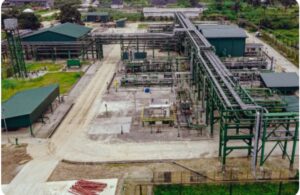Old Electronics Cost More Than New By Xperien CEO Wale Arewa
Trying to stretch the IT budgets by delaying or avoiding new equipment acquisitions may be tempting, but older equipment costs more to maintain. According to a Wipro survey, the optimal PC refresh lifecycle for both laptop and desktop PCs is three years. The analysis takes into account the cost of PC acquisition, the cost of issue resolution and maintenance based on reported failure rates of PCs at different ages, and out of warranty repair costs. For PCs that are older than three years, the cost of maintenance and issue resolution increases such that it is cheaper to purchase a new system. The research data demonstrates that support costs increase with age, a five year old PC costs twice as much to maintain than a new one. One of the maintenance cost drivers is that fact that older systems suffer from more security incidents – a four year old PC has 53% more security incidents than a PC in its first year. Effective IT asset management is an art, having control over the real total cost of ownership of IT assets can produce significant cost savings and also increase operational efficiencies. There are many options and decisions that modern businesses face in the acquisition phase of their IT asset lifecycle. These could include aspects such as specific business requirements, budget constraints, a decision to lease or buy, support costs. The first consideration is whether to lease or buy. Leasing requires lower initial capital outlay and normally includes maintenance support. However, there needs to be a balance because the longer the lease term, the more one would spend compared to purchasing the equipment outright. Purchasing has the advantage of ownership and the associated tax benefits including the tax savings on the depreciation of equipment over their lifetime. However, owning IT assets means that businesses own the maintenance and repairs as well. If one considers the total cost of ownership throughout a product’s refresh cycle, there is a significant difference between three and five years. This would typically include software upgrades, repairs, support, lost productivity when products are in for repairs, data loss and product upgrades. Hanging on to older equipment may not be in the best interest of a company, especially in terms of operability. More importantly, this decision typically doesn’t present the cost savings that many businesses expect. It is crucial to consider the total lifecycle costs and to integrate an asset management plan into the decision making process. Every company has its own unique factors and considerations during their IT acquisition decision-making process. By implementing a robust IT asset management plan, businesses will minimise maintenance costs and capture the maximum residual value of assets. By employing a reputable IT Asset Disposal (ITAD) service provider, this residual value can be used to reduce the cost of new hardware acquisitions.








